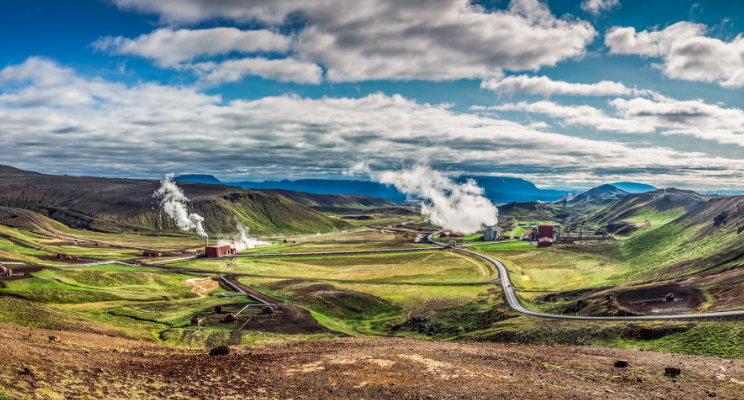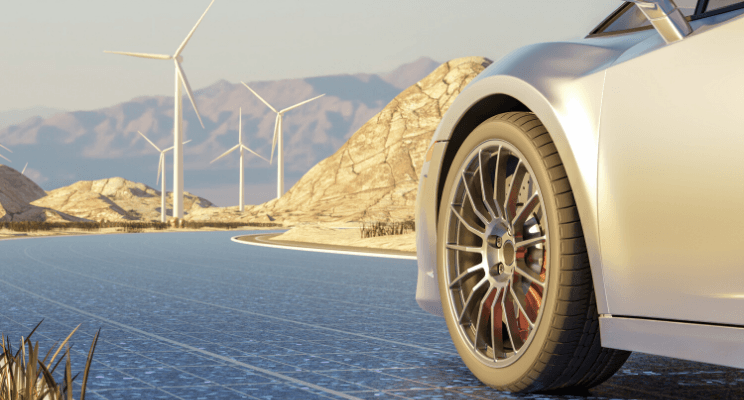Renewable Energy Ideas That Might Work | Dyball Associates
With governments the world over seeking to hit climate change and net zero carbon targets by 2050 the need for innovation and new technologies has increased massively. We look at some renewable energy ideas that might be just crazy enough to work.
Digging Deep for Unlimited Renewable Energy
Deep beneath the foothills of Tuscany’s Apennine Mountains is a source of energy that could potentially be unlimited if harnessed correctly. Enter the Venelle-2 drilling tower that has drilled so far down into the Earth that it has encountered temperatures and pressures that are so high that rock itself bends and melts.
At this level there are supercritical geothermal fluids that could be tapped into to spin a turbine located two miles above on the surface. If these fluids could be exploited it could create one of the most energy intense forms of renewable power seen so far.
The site of Venelle-2, the Larderello-Travale geothermal field in Italy was the same spot where geothermal power generation was born. Back in 1904 the first experiments could only power five light bulbs, today the site produces a whopping 10% of the world’s geothermal energy.
Space Lasers
Still in the realms of science fiction is the ability to harness the power of energised particles that flow across the solar system. The main theory in how to achieve this is to use specially designed satellites that captured the particles and transmit them to the Earth’s surface via infrared lasers.
Still only a concept, the Dyson-Harrop satellite would have a long metal wire loop aimed at the Sun.
The wire is then charged to generate a magnetic field that captures the charged particles in the solar wind. These particles would then be funnelled into a receiver to produce the current that generates the magnetic field.
In short, it’s a self-sustaining system! The current not needed for the field would then be used to power the laser trained on satellite dishes on Earth that then collect the energy.
Why use infrared lasers? Air is transparent to infrared meaning that the atmosphere won’t absorb any of the energy from the laser beam.
This source of renewable energy is not likely to be created any time soon but it’s nice to know there’s a potential solution to the energy question in the sci-fi world of the future.
(Deceased) People Power
This one is already being used by several regions in the UK. Basically, crematoriums are being used to provide heating. For example, in Worcestershire, (our home county) Redditch Crematorium passes on the heat it generates to the local swimming pool, saving it thousands of pounds in heating bills every year.
Other crematoriums have installed turbines and sell the excess energy they generate back to the National Grid.
Dance Revolution
Piezoelectric technology has been experimented with many times in the pursuit of renewable energy.
The word piezoelectricity means electricity resulting from pressure and latent heat. Perhaps one of the most famous examples of this was Club Watt in Rotterdam.
The specially designed dancefloor of the club harnessed the pressure of its party goers dancing to create energy that kept the club’s lights on.
Other forms of this technology include power generating footpaths that use the energy created by footfalls to create energy. Roads and the London Underground have also been proposed as possible areas where Piezoelectricity technology could be implemented.
Genetic Modification
So, another one that comes straight from the pages of a science fiction novel is the concept of genetically engineering organisms to either generate energy or grow faster to replace fuel sources quicker.
In parts of the world scientists have developed genetically modified trees that grow 40% faster for use as paper, as pellets for power stations and as fuel for cars. Some theories go even suggesting that genetic modification could be used to create trees and plants that can better capture solar energy that can then be used to generate renewable energy that can be harnessed by humans.
In 2018 scientists accidentally created an enzyme that eats plastic bottles. With plastic pollution being a major environmental concerns it is hoped that the creation could lead to a way of safely disposing of and recycling plastic back to its base components.
Fears over genetic engineering remain however with concerns that a genetically modified organism could end up causing environmental damage.
Energy Generating Roads
There are thousands of miles worth of roads that crisscross the planet.
One Dutchman Daan Roosegaarde is working on ways to turn them into solar energy capturing surfaces. He’s had some success in Holland with Solar bikeways but the challenge of designing a strong enough road is proving difficult.
There are now many companies on the scene dedicated to get the solar roads idea off the ground.
After several trials of solar roads, the need for more durable and efficient technology has been highlighted as they revealed that in their current forms, they’re expensive and inefficient.
Critics say that rooftops and empty fields are the future for solar.
Solar roads might have their limitations, but they could be the solution to the expected electric car revolution.
Converting the energy of a moving car into an efficient power source for that same car sounds like science fiction, but it could be the answer to powering all those new electric vehicles the government wants on the nation’s roads by 2035.Further Reading
2020 Renewable Energy Market Trends
Ofgem sets out plans to hit net zero carbon emissions by 2050
Dyball Associates are proud to help new supply businesses successfully launch in the UK market.
Through our energy market consultancy services, and the software we’ve developed, we’re supporting new UK electricity and gas suppliers get set up and start supplying.
For more information on how to start and manage an energy company, get in touch with Dyball Associates today.
Follow us on Twitter and LinkedIn to keep up to date with the latest news and updates in the energy industry.









